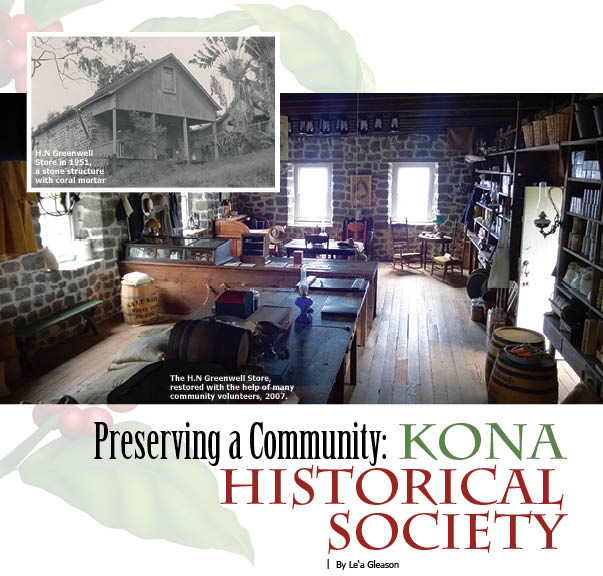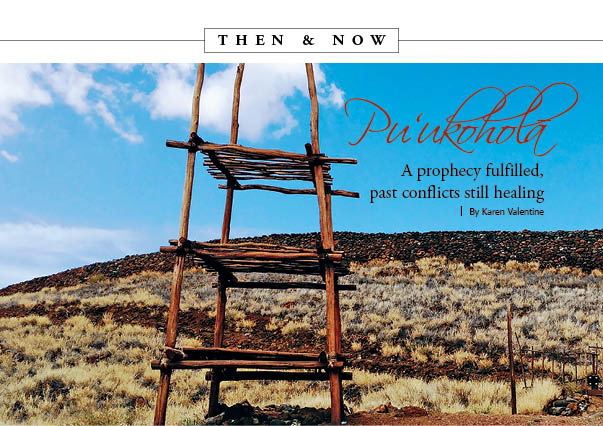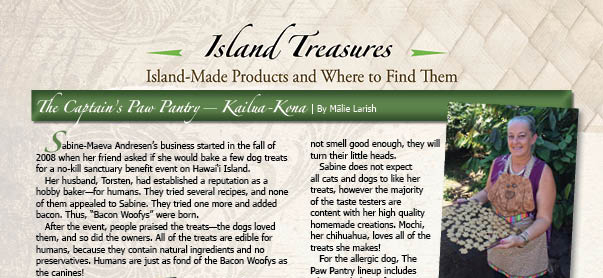
Preserving a Community: Kona Historical Society

By Le‘a Gleason
The stories that stem from the history of communities in Hawai‘i are diversified because of a blending of cultures and influence of immigration, growth of population, and the birth of industry.
It was during this period of growth, in the 1970s, that the population of Kona was about 8,000 people. The combined population of North and South Kona today is somewhere around 75,000 people.
The coffee industry was such a driving factor in the economy at the time that school schedules were planned to accommodate the coffee-picking schedule. And something else was happening: as the tourism-oriented developments began on the Kona Coast, the community began to feel the influence of an external image superimposed on the Hawaiian Islands to attract visitors.
The culture wasn’t just white sand beaches and hula dancers. No, it was the rich legacy of a melding of many people’s stories. Jill Olson, who at the time had recently moved from O‘ahu (now a 45-year Kona resident), worked with the community and was the first executive director of a small group aimed at preserving those stories: Kona Historical Society (KHS).
Jill had begun working with Sherwood Greenwell, a descendent of a long line of ranchers in the Kona community well-known for having operated the Greenwell General Store during the nineteenth-century. It was an important community landmark and was in need of repair.
In an oral history recorded in 2013, Jill remembers the beginnings of KHS.
“In 1974, I was working in Sherwood’s office and Jean [Greenwell] had sent out a letter to the family and she was getting responses, everybody wanted to save the store. Some wanted a historical society, there was this energy and they felt the need,” she says.
Sherwood had been a key community historian, as he was raised a rancher, and then became a supervisor for the county, thus being involved with local politics. His sister, Amy Greenwell, worked with Bishop Museum and had a strong connection with other local historians as well.
So as the preservation of the Greenwell General Store began, so too the historical society was born. Spearheaded by a group of concerned citizens, the goal was to preserve the stories of all the families important to Kona’s rich history.
Looking back, current Executive Director Joy Holland Cesca says there was a marked difference in the type of preservation the group decided to pursue.
“A group of residents started to talk about [creating] some kind of organization. They wanted to see what they could do to advocate [since] there was a political component trying to stop [structural] development. They decided they wanted to preserve the history,” she says.
Although some preservation of physical structures was done, it was decided that the focus would be more on preserving the intangible stories of the people and their rich cultural history.
According to Joy, Sherwood and his in-law Jean Greenwell, an amateur local historian and archival scholar, with a group of concerned citizens and local families were also committed to the idea that this should be something preserved for all of Kona. They didn’t want it to be just a community monument to the Greenwell family. They wanted it to be somewhere for the whole community to engage.
“If someone came to talk to them about the history of Kona, they were always ready to sit down and give as much time as they could. It’s this model that KHS is now steering its ship by. There have been a lot of prominent kama‘āina families involved and providing support to the organization over the years, but we really want to make this about every family in Kona. What we think is exceptional is every story that’s here,” Joy says.
KHS continues to engage visitors and longtime community members and their children who may have their own roots in that culture.
In the beginning, however, getting KHS off the ground and running was a task for the organization.
“Because it was community driven there was a learning process involved in how to care for and maintain the collections. Jill Olson really tried to find trained consultants that could help us,” Joy says.
By working together and combining their skills, Kona Historical Society and the community:
• built and restored two buildings that are now on the National and State Register of Historic Places,
• oversaw an era of development when Kona Historical Society was invited to become the first Smithsonian-affiliated museum in Hawai‘i,
• still remains the only organization that has two permanent National Endowment for the Humanities Exhibits,
• and they built an important archival collection and innovative living history programs from the ground up.
During the initial collection development, Jill met Mary Parr, a librarian and archivist who was developing software to keep track of museum collections with her husband. Today, Past Perfect Museum Software is used by more than 9,500 museums around the world.
As processing and caring for a collection of historical artifacts started to take shape, so did a decision to establish a “living history” approach to KHS’ community outreach programs.
“They felt it would be great for school programs and engage visitors and give them a clear view of what our culture is like.
Even today when you see Hawai‘i represented in popular culture, it’s a fantasy—the types of narratives that start to arise can be counterproductive. The real aspects of human life here—the toil, struggle, hard work, grief, stories surrounding World War II, and what became of Hawaiian people when this immigration started—that’s glossed over.”
A living history model allows people to walk onto a site and see, touch, smell, and feel what life might have been like in past times. KHS has two living history sites: Kona Coffee Living History Farm and the H.N. Greenwell Historic General Store.
“Jill Olson and the early founders were eager to find something that engaged people on a visceral level…you walk onto a historic site and you get to see people engaged in certain activities almost as though you’re stumbling into a certain time. Her thought was that living history allows people a clear picture that they might not get in a static exhibit,” Joy says, “[And] our Kona Coffee Living History Farm has this element of the hard work and sacrifices the Japanese workers made to come here.”
The farm environment stages the period of 1925 to 1945. Visitors can explore coffee and macadamia nut orchards, historic structures, and are accompanied by costumed interpreters throughout their journey.
At the General Store, the oldest standing commercial building in West Hawai‘i, visitors can view what a typical shopping trip might have been like in the 1890s. Nearby, stands a large wood-fired forno, or Portuguese Stone Oven. Once a week, volunteers and locals get together to talk story, roll dough, and bake sweet bread. The community can then purchase the bread, and Joy says many people do.
“It’s absolutely crucial that children growing up in this community take pride in where their family came from. Most of us want to be lifelong learners, they want to find a way to do something meaningful, to be part of something that preserves what they remember, and some of that is just teaching these things all over again. The bread baking program was about perpetuating what people might have forgotten: that a big part of ranching life was a taste for Portuguese food,” Joy says. “It’s a way for even those who don’t have the funds or time to visit a typical museum to stay connected to their culture.”
In Summer 2015, KHS will begin to construct an additional element of historical preservation: a small gallery and exhibit space. During this time, the General Store exhibit will temporarily close. Joy is excited for how it will provide ways to share information even more widely and with larger audiences than it presently can in its small archive and other programs.
“The gallery is a culmination of what some of our founders wanted, which was to make the history and materials of Kona available to everybody, and the gallery really provides a means to that. We [want] to share some of these collections more widely. We want to find a way to share the artifacts and documents and things that will tell these stories in our gallery,” Joy says.
It’s all about continuing to share the rich history of Kona with today’s residents, many of whom have a firm stake in that culture—be it through living here or being descendants of families who did live here. The gallery will help to tell the story of every man and woman in Kona’s history through additional elements that support that process such as artwork and photos that represent the culture and lifestyle of what Kona was and what it continues to be.
KHS feels that the goal of any successful historical society is just that: to lend expertise with historical and fine art collections and engage people so that the stories are truly authentic, emotional, and mean something to the community.
“We’re really well poised to do it,” Joy says. ❖
Visit KHS:
Kona Coffee Living History Farm: Mon–Fri, 10am–2pm
H.N. Greenwell Store Museum: Construction planned. Call 808.323.3222 for availability.
Contact Kona Historical Society
Contact writer Le‘a Gleason


